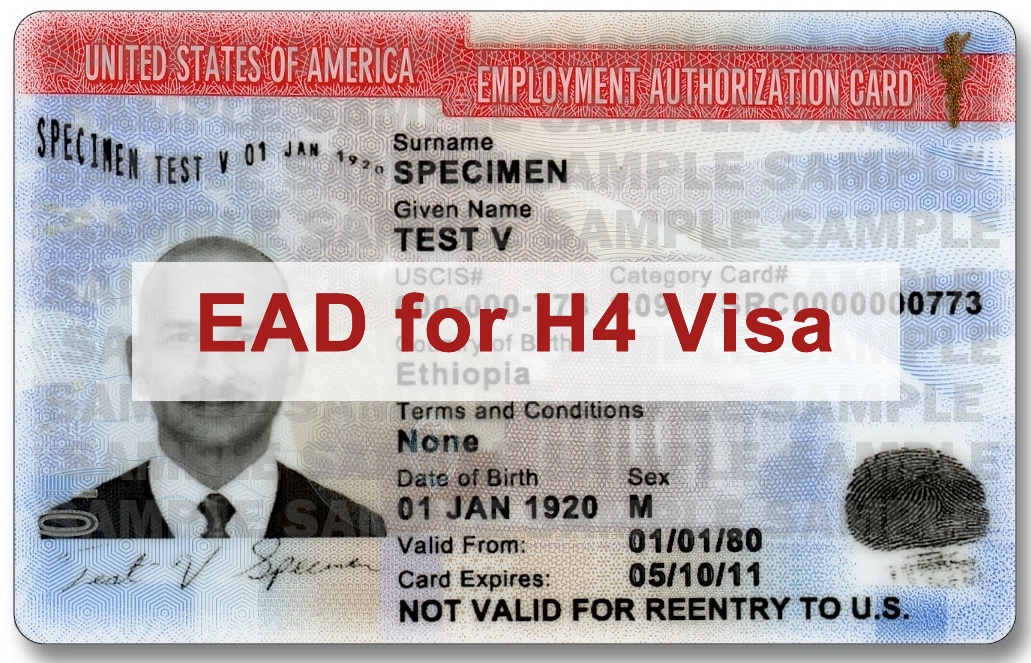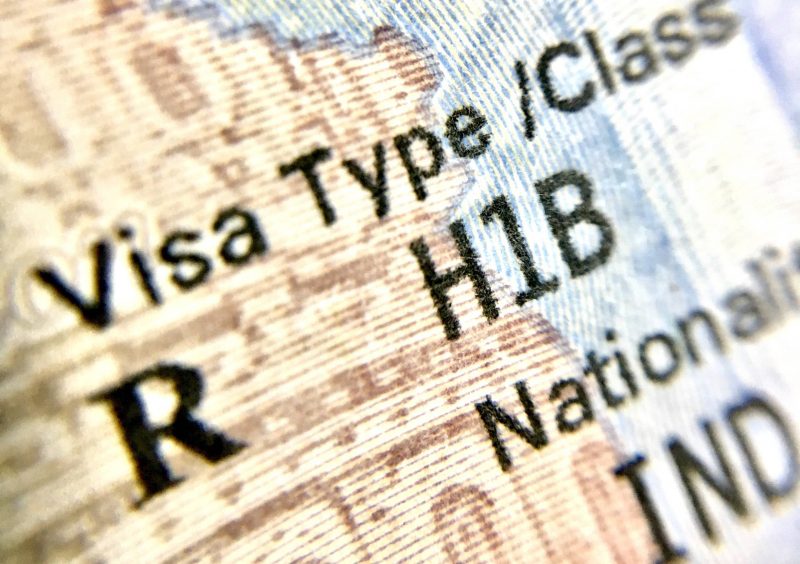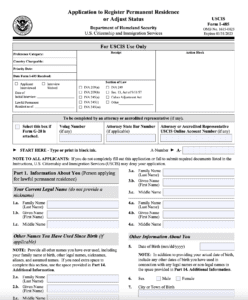H-4 EAD FAQs | Common H-4 EAD Questions Answered
On May 26, 2015, the USCIS began accepting applications for H-4 dependent spouses to obtain employment authorization. This long-awaited change is a relief for the thousands of H-4 holders who will be eligible for the benefits of employment. We’ve received many questions regarding qualifications, documentation required, processing procedures and the EAD lawsuit. Below is our H-4 EAD FAQ series based on information released by USCIS.
H-4 Visa Background
The H-4 visa is a dependent visa for the spouses of H-1B, H-2A, H-2B, and H-3 holders in the U.S. This visa status is contingent upon the principal H visa holder’s status, so things such as extensions, transfers, terminations, and revocations applied to the principal holder will apply to all dependent H-4 holders.
While being able to bring a spouse over to live with you during your H-1B stint is a great benefit of the visa, having that spouse be able to earn an income can be vital to the success of your endeavors in the country.
Now, with this new rule, H-4 holders can apply for Employment Authorization Documents (AD) in order to work in the U.S. freely. However, there are stipulations to the rule that must be taken into consideration when applying.
EAD Rule Requirements
In order to qualify for employment authorization documents, there are two main criteria. First, the principal H-1B worker has to have an approved I-140 OR have been approved for H-1B status under sections 106(a) and (b) of the American Competitiveness in the Twenty-first Century Act (AC21). This act allows nonimmigrants under H-1B status to continue to work in the U.S. while they transition to lawful permanent resident status.
H-4 EAD FAQ – Frequently Asked Questions Answered
This H-4 EAD FAQ series may help you determine whether you are eligible for work authorization. Any situations not addressed below should be addressed with a qualified immigration attorney.
Q. Is this the only opportunity I have to apply?
Fortunately, this is not a one-time opportunity. As an H-4 immigrant who receives an EAD, you are able to renew your authorization for as long as you maintain eligibility in accordance with 8 CFR 214.2(h)(9)(iv).
Q. Am I required to be in the U.S. in order to apply for an EAD?
In order for indviduals to maintain H-4 status, they must be in the United States and in order to apply for employment authorization you must be in H-4 status. Therefore, you must be in the U.S. to apply.
Q. If my spouse’s I-140 petition was revoked by USCIS, am I eligible for an EAD?
The requirements explicitly state that to be eligible for an H-4 EAD the H-1B spouse must have an approved Form I-140. If for whatever reason the USCIS revokes this petition, you would not qualify. However, you still have the potential to qualify if your spouse received an extension on their H-1B status under section 106(a) or (b) of AC21.
If you have already received your H-4 EAD and your spouse’s I-140 is revoked, then your employment authorization will remain valid until it expires. When you reach the end of your H-4 EAD validity period, you will only be able to renew it if your spouse has an approved I-140.
If your spouse loses his or her H-1B job and falls out of status, there is a 60-day grace period with which a new H-1B job can be acquired. After that, both you and your spouse will be considered out of status and your EAD will be invalid.
Q. If a previous employer approved my spouse’s I-140, do I qualify?
The regulations state that your H1B spouse needs to just have an approved I-140. It does not state that it has to be filed by the current employer or even the same one who filed their Form I-129. With that being said, it shouldn’t be an issue if it was filed by a previous employer.
Q. What if my spouse has advance parole?
Advance parole allows foreign nationals to re-enter the U.S. without a valid visa status. This is particularly helpful for those that have applied for adjustment of status but need to travel out of the country in the interim. However, having advance parole means that your spouse does not have a valid H-1B status, which also means that you do not have a valid H-4 status and are not eligible for EAD.
Q. Is my H-4 EAD card tied to a particular I-140?
Fortunately, your employment authorization is not tied to any single petition, but rather the fact that an approved petition exists under your spouse’s name. Therefore, if your spouse changes jobs and has a new I-140 filed under his or her name, you can still file for an extension or renewal of your H-4 EAD.
Q. How can I renew my H-4 EAD?
The USCIS says on its site that, as long as you are still eligible for employment under the H-4 visa (meaning that your H-1B spouse still has an I-140 petition approved with the USCIS), then you can file a new I-765 form within 180 days of your EAD’s expiration. It is not advisable to file more than 180 days before this date.
As of January 2017, the USCIS is providing a 180-day extension to anyone who has filed a new I-765 for their EAD and is still eligible for employment authorization.
Q. What if I lose my EAD?
If your EAD card is lost, stolen, damaged, or destroyed, then you will need to get a replacement. This is done the way that you would get a renewed card. Just file a new I-765 along with the filing fee to replace your card.
Q. Is there an H-4 visa interview?
Before you can apply for your EAD, you will need to obtain the H-4 visa, which will likely require an interview if you are not already in the U.S. under a different nonimmigrant visa. This interview is often the cause for concern among prospective H-4 holders, but it functionally exists to make sure that your relationship with your H-1B spouse is legitimate.
Some sample questions for the H-4 interview might include:
- Do you plan to work in the U.S.?
- How long have you and your spouse been married?
- Where do you plan to live in the U.S.?
- What does your spouse do for a living?
These are just some questions that may or may not appear in your interview. The best advice is to answer honestly and to say that you don’t know the answer to a question if you are unsure. Lying or exaggerating the truth can lead to much more serious consequences than having your H-4 denied. Speak with your immigration attorney to learn how you can best approach your interview.
One of the biggest advantages of gaining employment authorization through your H-4 status is having unrestricted work authorization which means you are not limited to a specific employer and can even consider self-employment.
Q. How long is my H-4 EAD validity period?
Under normal circumstances, your H-4 EAD validity period would be granted for as long as you had H-4 status. This means that once your H-1B spouse needs to renew his or her visa, you would need to also renew your H-4 and EAD to extend the validity period.
Your H-4 visa status is tied to your H-1B spouse’s status. Therefore, it will be valid for as long as the H-1B is valid, which is an initial period of three years with the opportunity to extend it to a maximum of six.
Q. What is the whole H-4 EAD timeline?
The H-4 EAD timeline begins with the acquisition of the H-1B visa on behalf of your spouse. There are many factors that go into the H-1B processing time including whether your spouse’s petition is cap-subject or cap-exempt, how busy the USCIS service center is, whether your spouse used premium processing.
Q. If I choose to start my own business can I employ other individuals?
Since there are no restrictions on self-employment for the H-4 EAD, you technically are not prohibited from hiring employees if you begin your own business with your work authorization. However, you should consult an immigration attorney before making any decisions to avoid falling into any legal situations that could jeopardize your status.
Q. Would I be able to file an H-1B petition, H-4 change of status and EAD application all at the same time?
You can file Form 1-765, along with Form I-539 and the I-129 at the same time. When it comes to extending your non-immigrant status, the I-129 for the H-1B applicant has to be filed no more than 6 months before the beginning date of employment. Be aware that the USCIS cannot adjudicate your I-765 until they make a determination about the H-1B spouse’s eligibility for status.
Q. What sort of documentation is relevant to provide as evidence for EAD eligibility?
A number of documents are necessary when demonstrating proof of eligibility. You’ll need:
- Evidence of H-4 nonimmigrant status
- Evidence of a bona fide relationship (i.e., marriage certificate)
- H-4 holder’s I-94 copy
- Copies of passports
- Copy of spouse’s I-94
- H-4 spouse’s approved H-1B notice
Additional details regarding the requirements can be found here.
Q. What are the H-4 EAD fees?
The H-4 visa requires you to submit a DS-160 form, which means that you will be responsible for a $190 fee. Aside from that, to apply for an EAD you will need to file an I-765 Application for Employment Authorization. This will incur an H-4 EAD visa fee of $410. You will also need to submit to a biometrics appointment (fingerprints), which will cost $85, bringing the total H-4 EAD cost to $495.
Q. Is the H-1B employer responsible for the fees?
No. Unfortunately, you will be responsible for all H-4 fees. Neither your employer nor your spouse’s employer is obligated to pay them. However, they may do so if they choose.EAD
Q. Do I need to prove that my EAD is an economic necessity?
No, you do not need to show that working is a necessity for your financial stability in the U.S.
Q. What is the H-4 visa EAD processing time?
Each case varies depending on the service center that is processing the petition. However, the general average for the H-4 EAD processing time is around 90 days or 3 months. This time could be increased if your service center is busier than usual or if you are served a Request for Evidence or Notice of Intent to Deny.
Unfortunately, premium processing is not available for Form I-765. It is a service that is reserved for visas that require the I-129 and I-140 petitions, so it could potentially be used for your spouse’s H-1B or green card petitions. However, the USCIS has temporarily suspended premium processing for all H-1B petitions during the 2018 and 2019 seasons.
In some cases, in lieu of H-4 EAD premium processing, the USCIS may grant an accelerated processing time for your petition under extreme circumstances.
According to the USCIS, they will not backdate the validity period of your EAD to when H-4 status was granted. The date of your EAD will, be valid from the date your I-765 is adjudicated or the date in which you acquire H-4 status (whichever is later). Likewise, the EAD expiration date will be when your H-4 status expires.
Q. Will I be able to use the EAD to enter/exit the United States?
An EAD is not the same thing as an entry document, it only serves to permit you to work in the U.S. If you leave the country and want to reenter you must have a valid passport and H-4 nonimmigrant visa (or another travel document) with you.
This H-4 EAD FAQ series is intended to act as a guideline for filing. If you have additional questions not included on this H-4 EAD FAQ page, please contact a VisaNation Law Group attorney to schedule a consultation.
Q. Is there a limit to how many H-4 EADs are issued?
No. Fortunately, unlike the H-1B visa, there is no annual cap to the H-4 EAD. So there is no need to worry about having your petition rejected on that account.
Q. Can I travel while my petition is being processed?
While it is possible for you to travel without directly jeopardizing your status, it is usually not recommended to do so until your EAD has been approved. This is because the USCIS could potentially send a request for additional information or a Notice of Intent to Deny. If you are not in the U.S. to be able to address and respond to either of these, the USCIS may consider your case abandoned and deny your EAD.
Q. Is it necessary to be in the U.S. to apply?
Yes. The only way to get employment authorization, in this case, is to already have H-4 status. Your H-4 status and your EAD are two different processes, as you will need to have your visa status approved before you can get your EAD.
Q. Can I get a green card from an H-4 EAD?
Yes, you can. The H-4 visa is considered a “dual intent” visa, which means that you can pursue a green card without jeopardizing your nonimmigrant status. There are a few ways to go about obtaining your green card while on an H-4 visa:
- If your spouse has an approved I-140 filed with the USCIS (which they will need if you are to qualify for an EAD), then you can wait until your spouse obtains their green card so that they can sponsor you for an F2A green card.
- Your spouse can obtain citizenship in the U.S. after obtaining their green card and then sponsor you for a marriage-based green card for a much faster process.
- You can apply for your own green card through an employer by pursuing the EB-1, EB-2, or EB-3 options.
- To qualify for an EB-1, you need to be an outstanding researcher or professor or you must be an executive or manager in a multinational company.
- To qualify for an EB-2, you must have an advanced degree or exceptional ability in your field of work.
- To qualify for an EB-3, you must either have a bachelor’s degree or otherwise be a skilled or unskilled worker. The job you are filling must be permanent and not seasonal.
- The EB-1A and EB-2 allow beneficiaries to self-petition for their green cards, though you must have National Interest Waiver if you hope to self-petition for an EB-2.
- If you have a significant sum of money to invest, you may qualify for an EB-5 green card, which grants permanent residence to foreign nationals who invest $900,000 or $1.8 million in a U.S. enterprise.
Q. What if I had EAD through another visa?
Some other nonimmigrant visas allow you to work in the U.S. automatically, such as the O, E, and L class visas. Employment authorization is incorporated into the visa itself, even for spouses. However, the situation is different for the H-4. Even if you were authorized to work under a different visa, you will need to file for a new EAD for your H-4.
Alternatives to the H-4 EAD
While this rule is very advantageous to the spouses of H-1B holders, it may not last forever. The rule has come under the administrative spotlight over the past several months, meaning that a day may soon come when H-4 holders are no longer able to apply for work authorization. In a situation like that, you need to know what your alternatives are.
The first and most viable solution is to obtain a work visa yourself. Depending on your field of study, educational background, and the nature of your occupation, you might qualify for an O-1 or even an H-1B visa yourself. If you are from Mexico or Canada, you can apply for the TN visa, though the list of available occupations for this category is relatively short.
Alternatively, your spouse can attempt to change his or her nonimmigrant status to a visa that permits spouses to work such as the O or E class visas. These visas in particular also allow dependents to work in the U.S. Keep in mind that changing one’s status can be tricky, especially when you have an approved I-140 pending with the USCIS.






